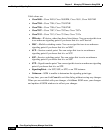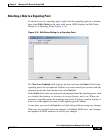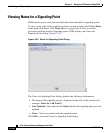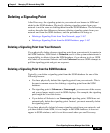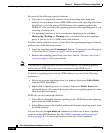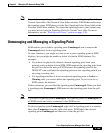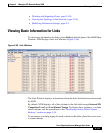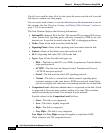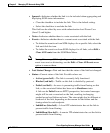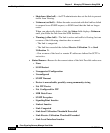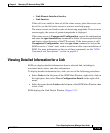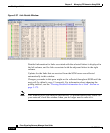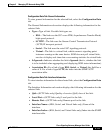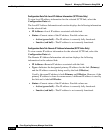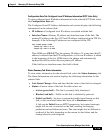
Chapter 3 Managing ITP Networks Using SGM
Working with Links
3-172
Cisco Signaling Gateway Manager User Guide
78-15589-01
If a cell is too small to show all of its data, place the cursor over the cell to see the
full data in a mouse over help popup.
You can resize each column, or sort the table based on the information in one of
the columns. See the “Resizing, Sorting, and Hiding Table Columns” section on
page 3-279 for more details.
The Link Window displays the following information:
• Internal ID—Internal ID of the link. The internal ID is a unique ID for every
event, linkset, link, signaling point, and node, assigned by SGM for its own
internal use. It can also be useful when the TAC is debugging problems.
• Node—Name of the node associated with the link.
• Signaling Point—Name of the signaling point associated with the link.
• Linkset—Name of the linkset associated with the link.
• SLC—Signaling link code (SLC) ID for the link.
• Type—Type of link. Possible link types are:
–
HSL—The link uses the SS7-over-ATM (Asynchronous Transfer Mode)
high-speed protocol.
–
SCTPIP—The link uses the Stream Control Transmission Protocol
(SCTP) IP transport protocol.
–
Serial—The link uses the serial SS7 signaling protocol.
–
Virtual—The link is a virtual link, which connects signaling point
instances running on the same device. SGM does not poll virtual links,
nor does it display real-time data or accounting statistics for virtual links.
• Congestion Level—Indicates whether there is congestion on the link. A link
is congested if it has too many packets waiting to be sent. This condition
could be caused by the failure of an element in your network.
Possible values for the Congestion Level field are:
–
None—The link is not congested.
–
Low—The link is slightly congested.
–
High—The link is congested.
–
Very High—The link is very congested.
Low, High, and Very High correspond roughly to equivalent ANSI,
China standard, and ITU congestion levels.



